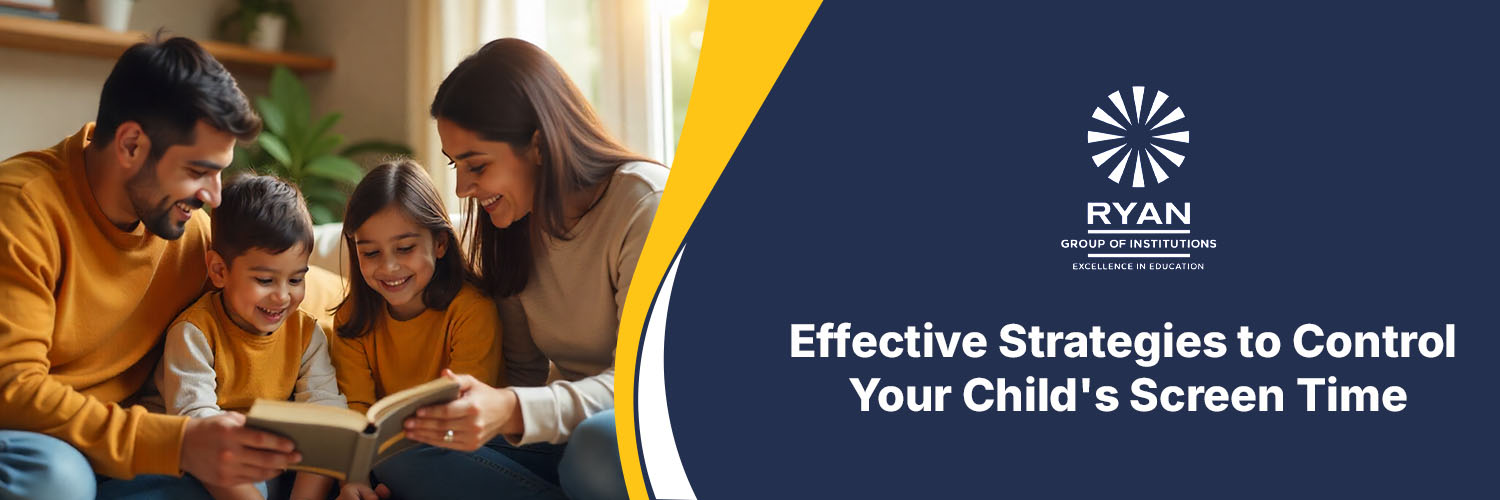Scenario 1: It is dinner time! You call your teenage son for dinner, and he turns up after multiple calls and brings his tablet along to the dinner table! He is scrolling on reels while munching the food on autopilot mode.
Scenario 2: Your daughter picks up your mobile phone as soon as she is back from school. You are busy with your meetings and emails, and you, even though don’t like it, let it as you are too busy to attend to her. What’s wrong with chatting with her friends and playing some games anyway, you think. However, deep down in your mind, a slight discomfort lingers!
These scenarios seem relatable? To the majority of urban Indian parents, these are well relatable. Technology has transformed the way kids learn and live today. It has also resulted in a marked increase in the amount of time young children spend in front of electronic screens. Particularly after the pandemic, online education has boomed, and it has become necessary for children to use screens for their education. However, excessive exposure to digital screens can harm their health, academic performance, and emotional well-being.
How can you ensure your children’s screen time is balanced so that they enjoy the benefits of technology yet avoid the harm? This blog provides some effective strategies. Read on!
 Harmful Effects of Excessive Screen Time
Harmful Effects of Excessive Screen Time
Research papers in scholarly publications have reported that excessive screen exposure causes physical and mental health issues that can harm the academic performance, social behavior and emotional well-being of children.
Physical health issues include eye strain, poor posture, and disturbed sleep. Mental health issues such as anxiety, reduced attention span, and irritability are found common in kids with high screen exposure.
These effects result in secondary effects such as poor academic performance, obesity due to lack of physical activity and poor social interactions.
How much screen time is OK?
Indian Academic of Pediatrics has published Screen Time Guidelines for Parents. According to these guidelines:
Kids below the age of 2 years: Should not be exposed to any screen.
Children between 2-5 years: Should not exceed 1 hour
Children and adolescent teens: Balanced and judicious use of screens strictly without disturbing any essential activities such as 8-9 hours of sleep at night, homework, meals, and quality time with family.
Practical Strategies to Control Screen Time
- Create a clear schedule
 Set clear rules and time limits for daily screen time. It is practically helpful to divide the daily screen time into educational screen time and entertainment screen time. Ensure that the daily screen time limit includes more time for education and less time for entertainment. When your children stick to the plan, reward them with a special weekend activity. This will be an efficient positive reinforcement of good habits.
Set clear rules and time limits for daily screen time. It is practically helpful to divide the daily screen time into educational screen time and entertainment screen time. Ensure that the daily screen time limit includes more time for education and less time for entertainment. When your children stick to the plan, reward them with a special weekend activity. This will be an efficient positive reinforcement of good habits.
- Encourage alternative activities
Enroll your children in various useful activities such as skating, music lessons, and team sports as per their interests and likings. Investing time in such activities helps lessen children’s screen exposure and develop extra skills apart from academics.
- Be a role model
Children imitate what they observe in their parents and family. If they see you glued to your phone or tablet all the time, they also copy that behavior. So, ensure that you also follow a clear schedule for using screen time. When your children observe how you manage your time efficiently, they will also emulate the same. Ensure you spend quality “no-screen” time with the family every day as this will help strengthen the bond as a family.
- Use parental control efficiently
Most of the apps offer parental control options. These tools help you monitor and limit your child’s online behavior. Use screen-time trackers, app blockers and safe browsing apps to help your child use technology safely.
- Designate Screen-free zones
Set up rules like No electronic screens in bedroom, Screen-free meal times, No phones in bathrooms etc., to avoid screen exposure in specific zones and times. This will have benefits like mindful eating, better sleep routines, and increased mental clarity.
 Balancing educational screen time
Balancing educational screen time
We cannot completely eliminate our children’s screen exposure. Children these days do need to use phones, tablets or computers for educational purposes. It is useful for parents to follow some simple techniques to ensure that the children are not affected by the ill-effects of prolonged screen exposure.
Teach your child the 20-20-20 breaks. In this method, encourage your child to take a break after every 20 minutes of screen time and look at something 20 feet away for 20 seconds.
Also, ensure that your children are seated in a proper posture while they use screens. They must be seated directly opposite the screen, without hunching or bending over. The screen must be at their eye-level. Children must sit with their spine straight and relaxed. Ensure optimal lighting in the room.
In today’s world, screen exposure is inevitable. However, it is entirely on us to educate our children on the ill-effects of excessive screen exposure and help them enjoy it responsibly. By following the simple and efficient strategies discussed here, we can help our children enjoy the perks of technology while safeguarding them from the harms of it.




